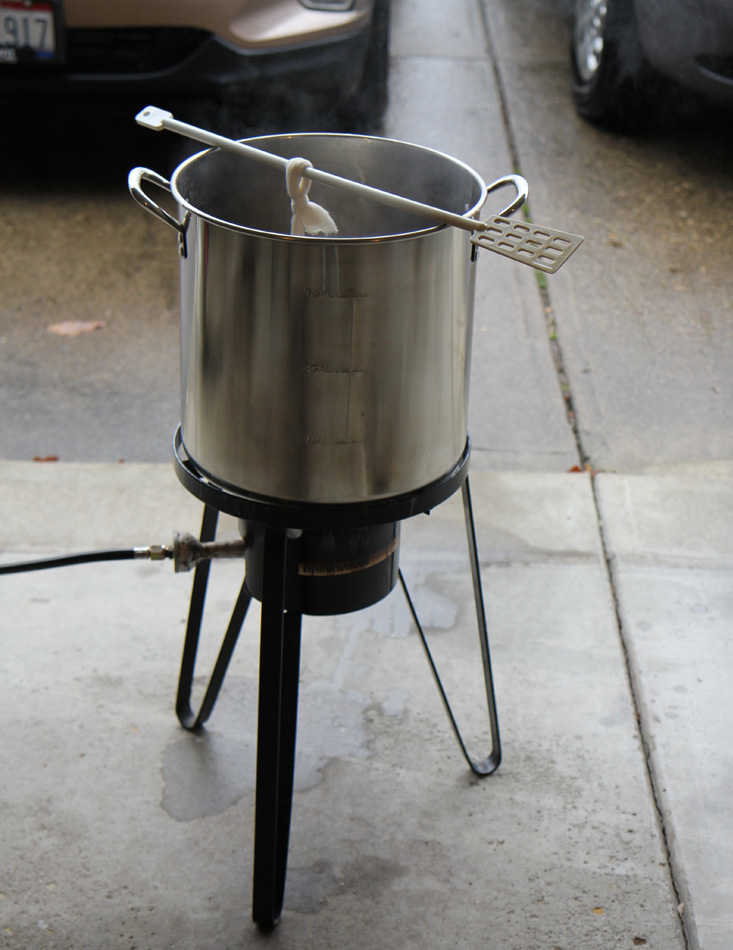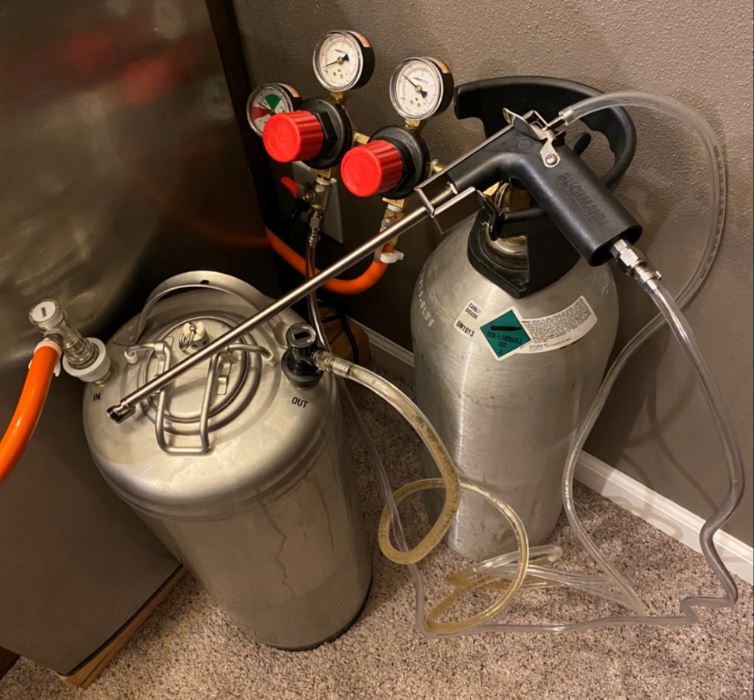The day began as predicted -- cold, rainy and miserable. With a cold-crashed flask of yeast just waiting to be pitched, I had to go thru with the plans... and so began
New Year's Brewday in the Garage.
Having moved most of the inflammables out of the way (the cars, the lawn mower, gas can and the like), I set up the burner out by the driveway and turned on a fan to fully circulate carbon monoxide. With the burner roaring like a freight train, we brought 3.5 gallons of water up to 160 degrees and added the 2-pound bag of crushed carapils dextrine malt for a 30-minute soak.

Then it was time to boil. Gently this time, to avoid darkening, the burner went back up in increments. Once there, we added an ounce each of hallertau and hersbrucker for the hour boil, fought back waves of green foam, and watched time tick away to the half-hour mark. It was time to add .75 ounce of Cluster hops, 3 pounds of Pilsen light LME and 6 pounds of golden light LME, along with half-a-gallon of water to make up for the boil-off. We had to stop the timer for a bit to bring the wort back up to a full boil. Note to self: boiling wort in 33-degree weather generates clouds of steam, making it difficult to see if the wort is actually boiling.
At 45 minutes in we added Irish moss; at 50 minutes, we added yeast nutrient, and with 5 minutes to go, we plopped in an ounce of Saaz for good smells.
After transporting to the utility sink and running our 40 degree cold water through the copper immersion wort cooler, we strained the cooled wort into the fermenter to remove most of the spent hops and break and managed to get most of the pot into the 6 gallon tank. After adding two more gallons of water to bring the total volume up to almost 6 gallons, we took the temperature (65 F) and the OG (1.070, six points higher than predicted, even with the added water).
Since the wort and the yeast were within 2 degrees of each other, we pitched the slurry after decanting most of the starter goo (which actually tasted pretty pleasant, just a bit yeasty). But we're hoping for light golden color in this batch, and had made the starter with dark DME (all I had on hand, a situation I've already corrected).
So, after clean-up and stow-away, it took about 3.5 hours in total to get this batch into the fermenter. Thanks to my
Assistent Braumeister, Atlantic Brew Supply and UPS for their parts in this thus-far successful brew.

 All that work to keep o2 out and had lapse for a bit during transfer...bah.
All that work to keep o2 out and had lapse for a bit during transfer...bah.








![Craft A Brew - Safale S-04 Dry Yeast - Fermentis - English Ale Dry Yeast - For English and American Ales and Hard Apple Ciders - Ingredients for Home Brewing - Beer Making Supplies - [1 Pack]](https://m.media-amazon.com/images/I/41fVGNh6JfL._SL500_.jpg)




























































